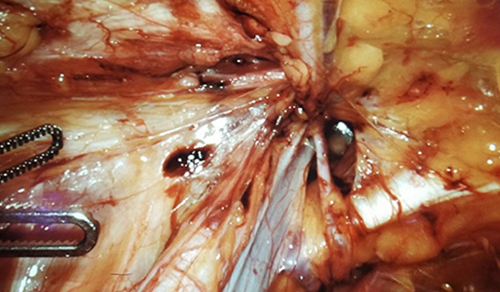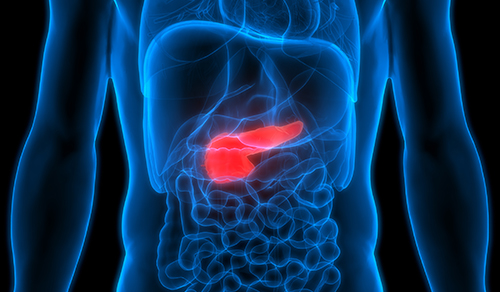Vasculitis Rethinking Therapeutic and Diagnostic Approaches

Dr. Robert F. Spiera
Novel Applications of Standard Therapies
With new drug development specifically targeting vasculitis being limited, Robert F. Spiera, MD, Director of the Vasculitis and Scleroderma Program at Hospital for Special Surgery, rheumatologist Lindsay L. Lally, MD, and their colleagues turned to investigating existing therapies based on mechanism of action that would seem relevant to some of the less common diseases found under the vasculitis umbrella.
Polymyalgia Rheumatica
“Polymyalgia rheumatica is a condition that affects about 1 percent of people over the age of 50 at some point in their lives,” says Dr. Spiera. “The good news is that it’s easily treatable, the bad news is that it is generally treated with a long course of steroids. Treatment with steroids, even at low doses in an elderly population, comes at an enormous cost in terms of morbidity, increasing, for example, the potential for skin fragility, diabetes, osteoporosis, muscle weakness, cataracts, and cognitive dysfunction.”
Seeking to find a less toxic therapy for patients with polymyalgia rheumatic (PMR), Drs. Spiera and Lally turned their attention to interleukin-6, a component of important pathophysiological pathways in PMR. In a small proof-of-concept study, they evaluated tocilizumab, a drug designed to specifically block this pro-inflammatory cytokine, to determine its potential use to treat PMR.

Dr. Lindsay L. Lally
The researchers enrolled 10 patients with newly diagnosed polymyalgia rheumatica who had received less than one month of treatment with corticosteroids. Patients were administered tocilizumab once a month by intravenous infusion in addition to corticosteroids, but were tapered off the steroids much more quickly than is done in routine clinical practice. “Within four months of trial entry, the nine patients that completed the trial were no longer on steroids, and all of them remained in relapse-free remission at 12 months, which was maintained at the 15-month follow-up,” says Dr. Spiera.
The pilot study, which was the first prospective study targeting the interleukin-6 molecule in newly diagnosed patients with PMR, suggests that tocilizumab could be a relevant drug with a robust steroid-sparing benefit in the treatment of PMR and serve as a platform for launching a larger trial that would better define the role of this drug in this disease.
Granulomatosis with Polyangiitis
In 2010, results of an NIH-funded clinical trial evaluating rituximab versus cyclophosphamide for severe ANCA-associated vasculitis were published in The New England Journal of Medicine. Dr. Spiera served as an investigator and author on the study, which showed that rituximab therapy was as effective as cyclophosphamide in inducing remission in patients, and was superior to cyclophosphamide in those with relapsing disease. “Rituximab has since made major inroads in the treatment of ANCA-associated vasculitis with regard to treating major organ complications,” says Dr. Spiera. “These patients previously could go into kidney failure or suffer respiratory failure as the result of pulmonary hemorrhage. But while rituximab works beautifully at cooling off those major disease manifestations, patients are often left with chronic grumbling sinonasal disease – a major determinant of poor quality of life. And even when these patients were treated aggressively with cyclophosphamide or methotrexate, the ENT manifestations did not seem to adequately respond.”
Dr. Spiera and others noticed in practice that patients who were prescribed rituximab also seemed to fare better in the ENT domain. Based on these anecdotal observations, he and his colleagues decided to look at this more closely in a retrospective study of 99 of their patients with granulomatosis with polyangiitis (GPA) and severe ENT disease. An otolaryngologist with expertise in GPA provided a score of ENT disease activity. Dr. Spiera and his team reviewed 975 visits among these patients.
“We found that patients who had been treated with rituximab were 11 times more likely to be in remission in that ENT domain than those treated with cyclophosphamide, methotrexate, or trimethoprim/sulfamethoxazole,” notes Dr. Spiera. “This appeared to confirm our clinical impression.” Dr. Spiera is now conducting a placebo-controlled pilot study to further evaluate the efficacy of rituximab at inducing otolaryngologic remission in GPA patients with active otolaryngologic disease.
“There’s no other disease that causes this kind of destructive sinonasal disease,” adds Dr. Spiera. “It’s a unique problem for this uncommon disease and successfully treating this manifestation is a major unmet need.”
Redefining Diagnostic Tools for Temporal Arteritis
Temporal arteritis is the most common form of vasculitis in people over the age of 50. “The disease can present with systemic and polymyalgia-like symptoms, as well as fevers, but often it presents with severe headaches and severe scalp sensitivity caused by inflammation of the blood vessels going to the head,” says Dr. Spiera. “If not properly diagnosed, patients have a substantial risk of vision loss. Like polymyalgia, temporal arteritis is very responsive to steroids. But unlike polymyalgia, it requires high doses of steroids to induce remission, and corticosteroid therapy is generally continued for about a year.”
According to Dr. Spiera, temporal arteritis is a bad disease and accurate diagnosis is elusive using temporal artery biopsy, the current standard of care. “Temporal artery biopsies are notoriously inaccurate,” notes Dr. Spiera. “Although you don’t see false positives, estimates suggest the sensitivity of the test may be as low as 60 percent. If you do biopsies on 10 patients who ultimately have the disease, as few as six of them may be positive. In Europe, researchers are looking at ultrasound to help make the diagnosis, but we felt there might be other ways to look at the biopsies that could increase our yield.”

pERM staining was noted predominantly in endothelial cells comprising the intima and vasa vasorum and adventitial fibroblasts.
One pathway, in particular, seemed particularly relevant in the disease. “It is a pathway that is modulated by Rho kinase, or ROCK,” explains Dr. Spiera. “This is an important molecule in both inflammatory pathways and in vasculopathy. The molecule is overexpressed in diseases affecting the blood vessels.”
Dr. Spiera, Dr. Lally, and their colleagues undertook a study to explore the relationship between temporal artery biopsy results and the activity of ROCK. By staining the biopsies for pERM (phosphorylated ezrin/radixin/moesin), a surrogate for ROCK activity, a pathologist was able to create a scale that measured pERM intensity. The researchers found that using the scoring method dramatically improved the accuracy of the overall test.
“We looked at patients with positive biopsies who had the disease, those with negative biopsies who ended up having the disease, and patients with negative biopsies who didn’t ultimately have the disease,” says Dr. Spiera. “We found that patients with a positive biopsy would tend to have a high score for pERM staining. Patients with a negative biopsy by routine histology who were subsequently diagnosed with the disease also had a high pERM staining score. Those that didn’t have the disease were not likely to have a high pERM staining score.” More recently the researchers confirmed the diagnostic utility of assessing ROCK activity to enhance the sensitivity of temporal artery biopsies in a larger cohort of 300 patients. They are now investigating whether altering the pathway can play a therapeutic role in temporal arteritis.
Reference Articles
Lally L, Forbess L, Hatzis C, Spiera R. Brief Report: A prospective open-label Phase IIa trial of tocilizumab in the treatment of polymyalgia rheumatica. Arthritis & Rheumatology. 2016 Oct;68(10):2550-54.
Lally L, Spiera R. B-cell-targeted therapy in systemic vasculitis. Current Opinion in Rheumatology. 2016 Jan;28(1):15-20.
Lally L, Spiera R. Current landscape of antineutrophil cytoplasmic antibody-associated vasculitis: Classification, diagnosis, and treatment. Rheumatic Diseases Clinics of North America. 2015;41(1):1-19. Review.
Lally L, Spiera R. Current therapies for ANCA-associated vasculitis. Annual Review of Medicine. 2015;66:227-40.
Lally L, Spiera RF. Pulmonary vasculitis. Rheumatic Diseases Clinics of North America. 2015 May;41(2):315-31.
Lally L, Pernis A, Narula N, Huang WT, Spiera R. Increased Rho kinase activity in temporal artery biopsies from patients with giant cell arteritis. Rheumatology (Oxford). 2015 Mar;54(3):554-58.
Lally L, Lebovics RS, Huang WT, Spiera RF. Effectiveness of rituximab for the otolaryngologic manifestations of granulomatosis with polyangiitis (Wegener’s). Arthritis Care & Research (Hoboken). 2014 Sep;66(9):1403-39.
Stone JH, et al; RAVE-ITN Research Group. Rituximab versus cyclophosphamide for ANCA-associated vasculitis. The New England Journal of Medicine. 2010 Jul 15;363(3):221-32.
Related Publications







